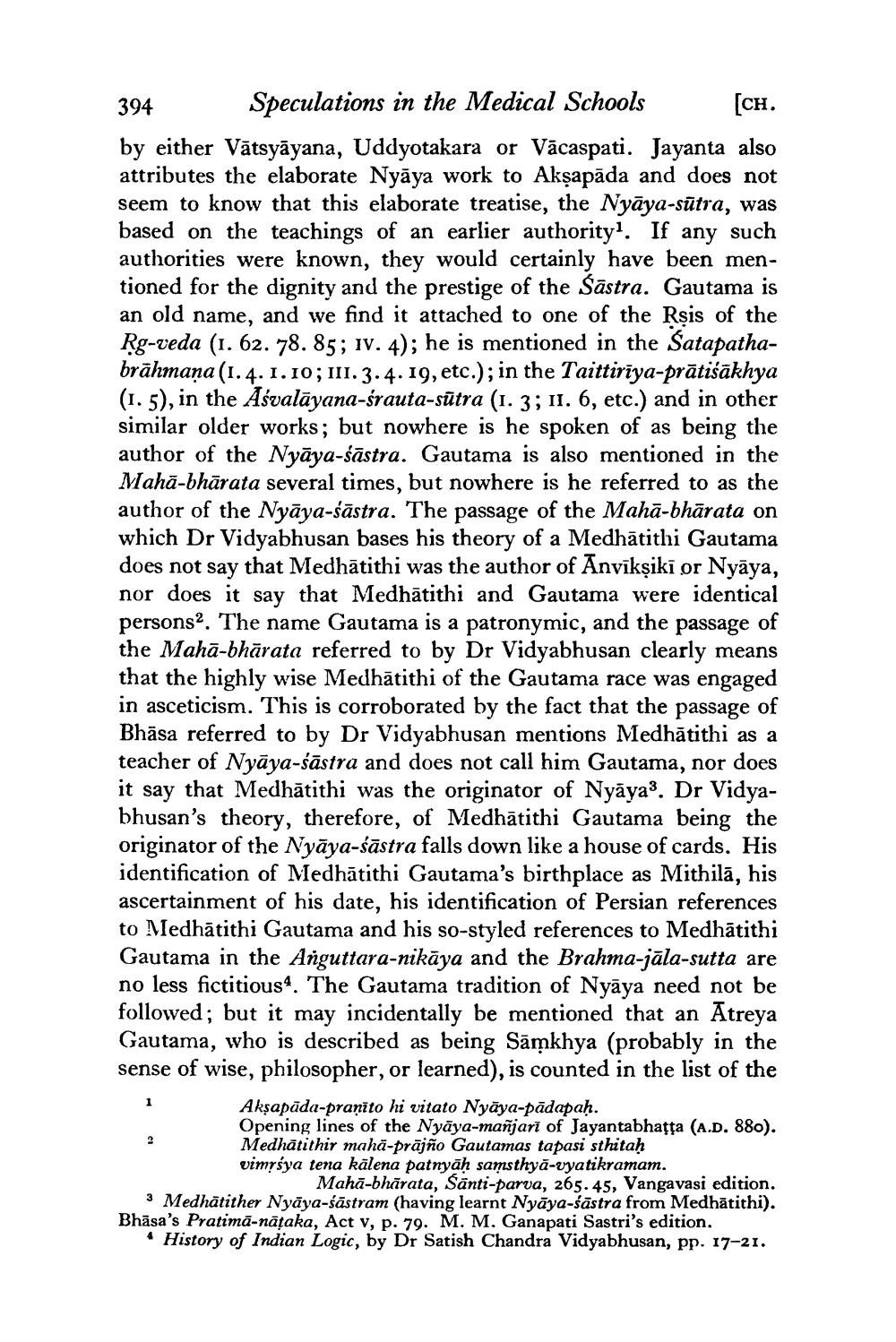________________
394 Speculations in the Medical Schools [CH. by either Vātsyāyana, Uddyotakara or Vācaspati. Jayanta also attributes the elaborate Nyāya work to Akşapāda and does not seem to know that this elaborate treatise, the Nyāya-sūtra, was based on the teachings of an earlier authority. If any such authorities were known, they would certainly have been mentioned for the dignity and the prestige of the Šāstra. Gautama is an old name, and we find it attached to one of the Rșis of the Rg-veda (1. 62. 78. 85; 1V. 4); he is mentioned in the Satapathabrāhmana(1.4.1.10; 111.3.4.19, etc.); in the Taittirīya-prātiśākhya (1. 5), in the Asvalāyana-srauta-sūtra (1. 3; 11. 6, etc.) and in other similar older works; but nowhere is he spoken of as being the author of the Nvāva-śāstra. Gautama is also mentioned in t Mahā-bhārata several times, but nowhere is he referred to as the author of the Nyāya-śāstra. The passage of the Mahā-bhārata on which Dr Vidyabhusan bases his theory of a Medhātithi Gautama does not say that Medhātithi was the author of Anvīksikī or Nyāya, nor does it say that Medhātithi and Gautama were identical persons. The name Gautama is a patronymic, and the passage of the Mahā-bhārata referred to by Dr Vidyabhusan clearly means that the highly wise Medhātithi of the Gautama race was engaged in asceticism. This is corroborated by the fact that the passage of Bhāsa referred to by Dr Vidyabhusan mentions Medhātithi as a teacher of Nyāya-śāstra and does not call him Gautama, nor does it say that Medhātithi was the originator of Nyāya3. Dr Vidyabhusan's theory, therefore, of Medhātithi Gautama being the originator of the Nyāya-śāstra falls down like a house of cards. His identification of Medhātithi Gautama's birthplace as Mithila, his ascertainment of his date, his identification of Persian references to Medhātithi Gautama and his so-styled references to Medhātithi Gautama in the Anguttara-nikāya and the Brahma-jāla-sutta are no less fictitious4. The Gautama tradition of Nyāya need not be followed; but it may incidentally be mentioned that an Atreya Gautama, who is described as being Sāmkhya (probably in the sense of wise, philosopher, or learned), is counted in the list of the
Akşapāda-pranīto hi vitato Nyāya-pādapah. Opening lines of the Nyāya-mañjarī of Jayantabhațţa (A.D. 880). Medhătithir mahā-prājño Gautamas tapasi sthitah vimrsya tena kälena patnyāḥ samsthya-vyatikramam.
Mahā-bhārata, Santi-parva, 265.45, Vangavasi edition. 3 Medhātither Nyāya-śāstram (having learnt Nyāya-śāstra from Medhātithi). Bhāsa's Pratimā-nātaka, Act v, p. 79. M. M. Ganapati Sastri's edition.
* History of Indian Logic, by Dr Satish Chandra Vidyabhusan, pp. 17-21.




